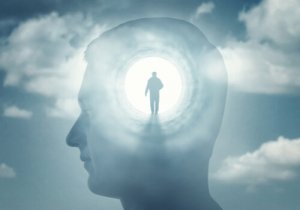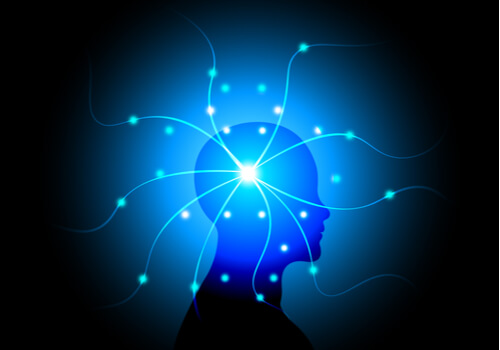The Psychopathology of Consciousness

Human consciousness has been studied since philosophy started, and the psychopathology of consciousness stems from this. However, after many years of study, there still doesn’t seem to be a consensus in the definition of this construct.
Descartes spoke of spirit, and his efforts focused on understanding what it meant for a spirit to be able to say something about itself. Block (1995) spoke of two types of consciousness and Chalmers (1998) claimed that it would take “a century or two” to resolve this question.
Currently, experts are studying psychological consciousness to find out if there are neural correlates with conscious states (Perez, 2007). The lines of research don’t seem to agree about the object of study: should we focus on the correlates of the states of consciousness or on the content of consciousness?

Psychopathological disorders of consciousness
Although the definition of consciousness doesn’t seem clear, the truth is that there are specific disorders of consciousness. Bleuler (1857-1939), a Swiss psychiatrist, defined consciousness as “the knowledge of one’s own self-knowledge”.
This way, people with altered consciousness are unable to respond adequately and comprehensibly to the demands of the environment, nor to internal stimuli. The psychopathology of consciousness is based on this definition.
Gastó and Penades (2011, in Santos; Hernángomez and Travillo, 2018) spoke of four characteristics of the consciousness that are especially relevant in disorders:
- The subjectivity or privacy of our minds.
- The existence of a single consciousness in each individual.
- Every act is directed towards an end.
- Self-consciousness, which is the capacity to know and recognize oneself.
Disorders of consciousness are organized according to what part of the body or brain they affect. The CeDe Psychopathology PIR Preparation Manual (2018) is taken as a point of reference here.
Consciousness deficit disorders: lost in sleep
The psychopathology of consciousness includes behavioral deficit disorders. We can characterize these by brain conditions where the people have difficulty in “waking up”, orienting themselves, and responding to sensory stimulation. They seem lost in time or lethargic. There are three types of consciousness deficit disorders:
- Lethargy, sleepiness, or drowsiness. These are people who are unable to maintain attention and alertness even when they try very hard. Lethargy isn’t a subjective sensation of sleepiness due to poor rest but an alteration where there’s hardly any physical or verbal stimulation.
- Obnubilation. The person is in a deeper state of distractibility and lack of stimulation. They feel confused and irritated when another person tries to get them out of that state. There’s a disturbance in their entire psychological functioning. Also, there are perceptual distortions, such as auditory or visual issues.
- Stupor. We can see stupor in conditions such as catatonic schizophrenia. The person abandons all voluntary movement and their speech is incoherent and barely understandable.
The complete absence of consciousness occurs when the person enters a coma, where reflexes such as the pupil corneal reflex disappear and where’s a flat electroencephalogram for thirty minutes. At this point, we can say that this person is no longer conscious.
Productive disorders of consciousness: hallucination in excess
In the psychopathology of consciousness, we also find alterations that suggest that, even though there may be consciousness, it’s completely distorted, giving rise to pictures of hallucinations and delusions.
Oneirism, or dream delirium, is a confusion between the real and the imaginary. This appears in all productive disorders of consciousness. Amid this confusion, people experience states similar to sleep, interspersed with moments of lucidity. We can see oneirism or confusion in the following disorders:
- Asthenic-apathetic stage. This appears mostly in older people, preceding toxic-confusional states. The asthenic-apathetic stage can appear in people who are at risk of suffering from delirium and is characterized by affective lability, irritability, fatigue, and apathy. There are also alterations in psychological functions, such as memory or attention.
- Confusional arousals. These precede the acute confusional state or delirium. Symptoms such as loss of coherence, distortion of memory, incomprehensible language, and disinhibition of behavior occur.
- Delirium. Delirium is an acute cerebral dysfunction that produces a total alteration of the mental state and an alteration of consciousness. Here, there are clear alterations in attention, disorders of perception, thought, short and long term memories, psychomotor activity, and the sleep-wake cycle.
The change of context in delirium
Delirium usually occurs in older people who go to a hospital for completely different reasons. During the night, they experience an acute confusional state.
The change of context, and the level of anxiety involved in being in a hospital, produce this. The problem here is that hospital workers often don’t know what to do to help. The key here is to change the context.
Narrowing of the field of disorders of consciousness: Division between thought and behavior
These disorders generate a lack of continuity between perception and cognition but are characterized by apparently “normal”, yet automated, behaviors.
We found the main disorder of the narrowing of the field of consciousness to be the twilight states. In the twilight state, the consciousness is totally obscured, but the person’s understanding of the world, although distorted, is partial.
The subject’s behavior seems to be in harmony with the environment and this is because their behavior is somewhat automated. These automatisms are involuntary movements, which means that they don’t perform them consciously. The people knew how to carry them out perfectly before experiencing this twilight state (sometimes called twilight amnesia)
There’s a difference here between people with schizophrenia, for example, whose automatisms give rise to strange behaviors.
In twilight states, impulses can also appear. Impulses are impulsive actions without a cognitive basis, and this differentiates them from the compulsions that can appear, for example, in OCD.
One characteristic of twilight states is that they arrive abruptly; however, they also disappear abruptly. They usually last a few hours or a few days, and the subject doesn’t remember anything about the episode.

Circumscribed alterations of consciousness: they don’t come alone
The psychopathology of consciousness is also found in psychological or neurological disorders without this being the patient’s main problem. This is usually the case in alterations such as depersonalization and de-realization, which usually appear in anxiety, panic, and neurotic situations.
Depersonalization is defined by Cruzado, Núñez, and Rojas (2013) as an alteration of a person’s self-consciousness. The person feels as if they’re distant and far away, and that they’re just a mere spectator observing their own mental processes and body movements. They’re only able to define their own symptoms with expressions such as “as if“, because of the difficulties involved in making those descriptions.
Depersonalization, although found in psychological and psychiatric illnesses, also appears in people without alterations due to physical and emotional exhaustion, stress, or sleep deprivation.
De-realization is a similar alteration. However, we’re talking here about a change in the person’s experience and perception of the world, and not of themselves.
All cited sources were thoroughly reviewed by our team to ensure their quality, reliability, currency, and validity. The bibliography of this article was considered reliable and of academic or scientific accuracy.
- Pérez, D. (2014). ¿La conciencia? ¿Qué es eso? Estudios de Psicología, 28(2), 127-140.
- Cruzado, L., Núñez, P. y Rojas, G. (2013). Despersonalización: más que un síntoma, un síndrome. Revista Neuro-Psiquiatría, 76(2), 120-125.
- Santos, J., Hernangómez, L. y Taravillo, B. (2018). Manual CeDe de Preparación PIR, 5ª edición. Madrid, España: CeDe.
This text is provided for informational purposes only and does not replace consultation with a professional. If in doubt, consult your specialist.








